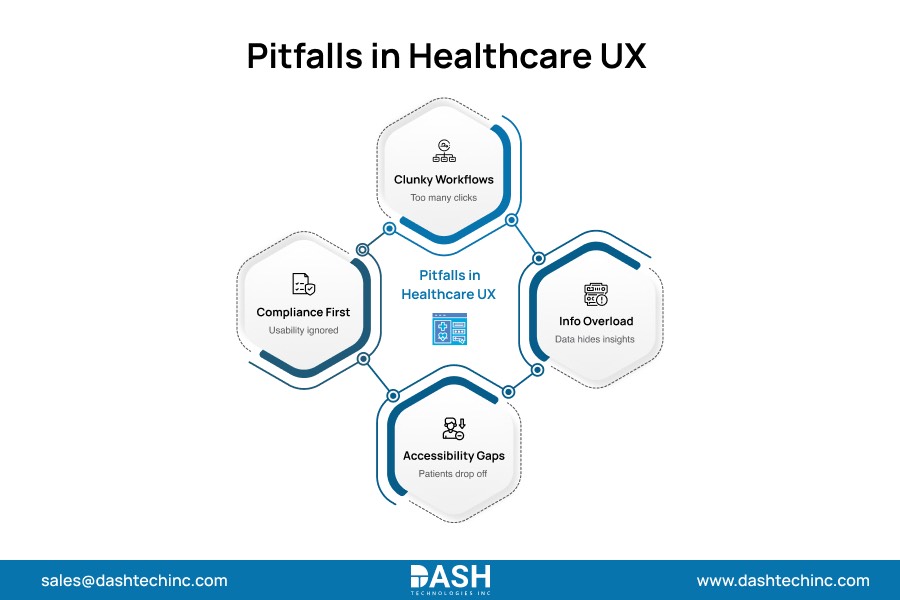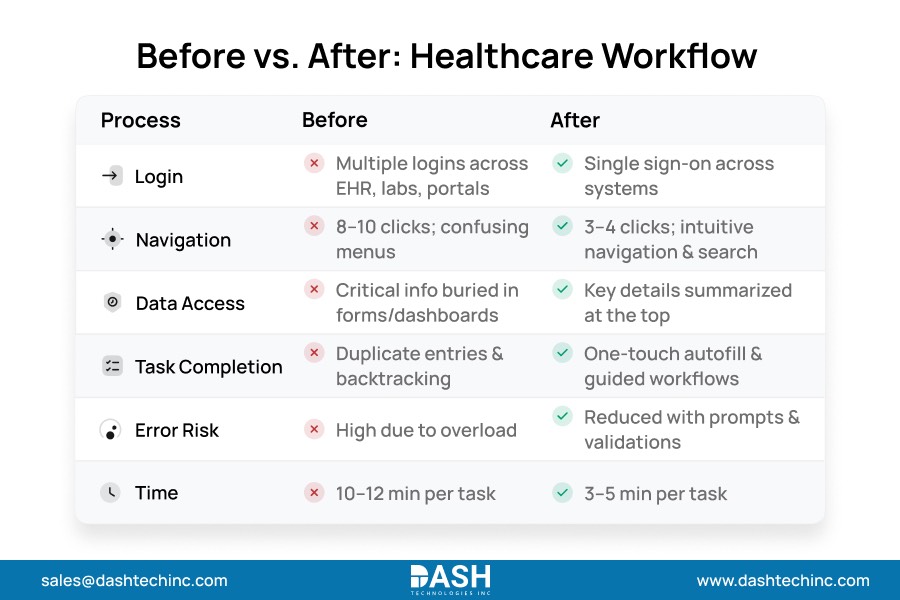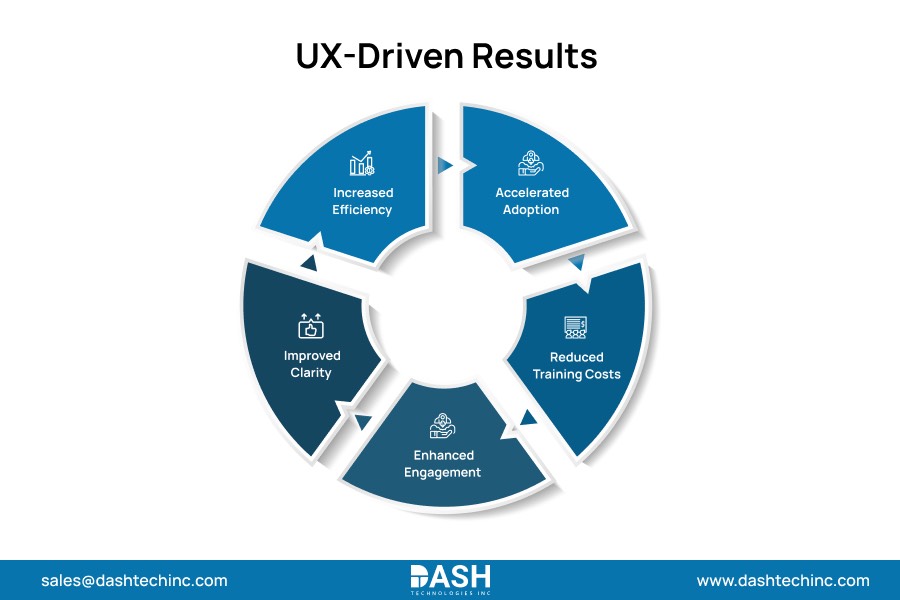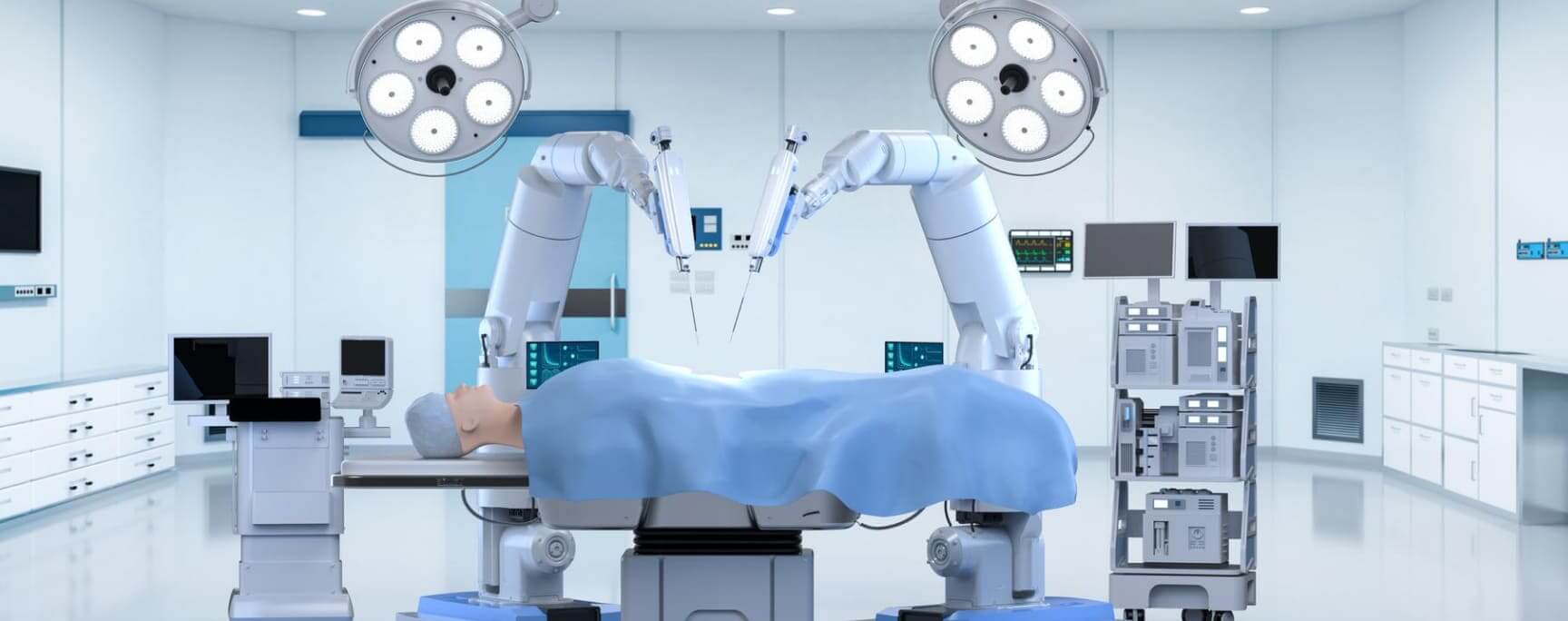Enterprise Healthcare Apps Need Better UX — Why It Matters Now
Healthcare providers are making significant investments in digital technologies to boost productivity, reduce costs, and enhance patient satisfaction. Yet, many enterprise healthcare apps fall short of delivering on this promise.
They don’t ease the experience for providers and patients — instead they add another hoop to jump through: complex workflows, confusing dashboards, and portals that seem designed to hinder rather than empower.
Poor user experience (UX) in healthcare apps is not just a nuisance — it affects how care is delivered, staff productivity and patient engagement. In a world where the clock is ticking for every patient, healthcare technology needs to not only comply with regulations‑ it must also work.
This blog takes an in-depth look at why enterprise healthcare apps have such difficulties with UX experience design, the real cost of a poor UI/UX, and how transitioning to human-centered principles can help transform technology to be a genuine partner.
Common Pitfalls in Healthcare UX Design

Most enterprise healthcare apps prioritize compliance, leaving usability as an afterthought. This creates barriers for clinicians under pressure, patients navigating portals, and staff with accessibility needs.
Clunky Workflows
Too many clicks and poor navigation waste time. These challenges can be barriers to care delivery when clinicians are under pressure.
Information Overload
Data-saturated dashboards look cool but are hard to parse. And crucial subtleties are often drowned out in the din, upping the chances of oversight.
Accessibility Gaps
Patients — especially older ones — ditch portals when they get too complicated. Regrettably, staff with disabilities also encounter obstacles where accessibility was not factored in from the beginning.
Compliance-First, Experience-Later
Systems tend to tick regulatory boxes without taking into account the stress and urgency that characterize real-world users. Healthcare workers should improve patient lives, not battle interfaces.
The High Stakes of Poor UX in Healthcare
Poor design is not just an annoyance; it’s a quantifiable drag on the economy:
- Lost hours: It can be enough to add five seconds to the search for an emergency room.
- More copy-paste and less focus: When forms are confusing, misfiles of data or simply missed data occur.
- Low adoption rates: Hospitals are investing millions in digital systems -and then struggle to get staff on board.
- Patient disintermediation: Heavyweight portals don’t allow patients to do much for themselves.
Principles of Human-Centered Healthcare UX
The best patient applications are designed for people, not just processes. Four principles stand out:
Human-Centered Design
Getting clinicians, administrators and patients involved early makes sure the software reflects what happens — as opposed to what people imagine should happen.
Accessibility First
The convenient features of being able to adjust font size, read on a screen-reader, and having strong color contrast access should be the norm, not an option.
Seamless Workflows
Every click and interaction should have a meaning. And easy navigation cuts down on annoyance and opens time for that most important thing of all: caring for the patients.
Scalable Interfaces
The applications need to keep up as well with the next generation technology such as AI, predictive analytics & Internet of Medical Things (IoMT). Design future-ready Keep systems up to date, streamline the life cycle of products and reduce costs.

Case Study: Streamlining Onboarding Through UX Improvements
A local hospital system was having difficulty getting staff started on a new patient monitoring program. On the previous interface it took 2–3 weeks to train, and adoption was sub-50%.
Simplify Navigation By re-designing workflows and making navigation an easier process:
- Training time decreased greatly (from weeks to only a few days).
- The percentage of students that adopted the system reached 85% during the first month.
- Staff members’ confidence increased, and patient care transitions became more efficient.
The above is a beautiful example of how design that purposeful equals is an ROI—cut costs; make staff more efficient, including going home safely at night and leave the patient better than when they walked in.
UX-Driven Results for Providers and Patients

Well-designed enterprise healthcare apps deliver value across the ecosystem:
- Rapid uptake: Clinicians readily adopt intuitive tools.
- Lower training costs: More efficient workflows mean less time in classrooms and more time in clinics.
- Better patient engagement: More intuitive portals to get patients to follow their plans.
- Less confusion: The clean interfaces don’t require a lot of thinking, and the less you must think about how something works when you’re in danger mode, the fewer mistakes are likely.
- Increased operational efficiency: Care providers have less system wrestling and more facetime with patients.
Emerging Trends in Healthcare UX
Healthcare technology is evolving rapidly. The next wave of apps will combine new tools to form even more potent user experiences:
Voice Interfaces: Providers will now be able capture data without ever having to touch anything with their hands, keeping attention redirected to patients.
Artificial Intelligence (AI) Personalization: Patient portals will customize patient experiences for their own health journeys, providing custom reminders and dwell.
Smart Dashboards: Rather than inundate individuals with raw data, systems will show them the most important real-time information.
AR/VR Use Cases: Training surgeons to provide an immersive experience for telehealth, these will transform how care is delivered.
The promise is not in futuristic gadgets, but in integrating these innovations through human-centered design.
Final Thoughts: Why UX Matters for Healthcare Outcomes
Enterprise healthcare apps with great UX are no longer a “nice to have”-they’re necessary for better outcomes, higher adoption and stronger ROI. Those that do grasp it stand to gain something tremendously measurable: patients who are more engaged; an enabled staff; operational efficiency.
The next era of healthcare technology will succeed only if it follows a single guiding principle: design for care, not just compliance.
Ideas or questions? Let’s connect! Contact DASH now.
About Dash

Dash Technologies Inc.
We’re technology experts with a passion for bringing concepts to life. By leveraging a unique, consultative process and an agile development approach, we translate business challenges into technology solutions Get in touch.









